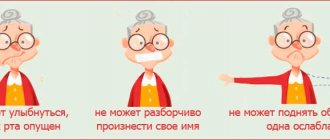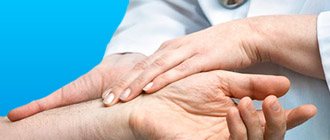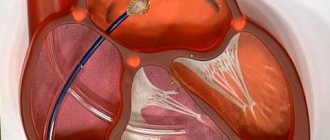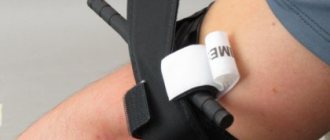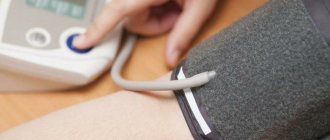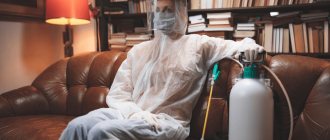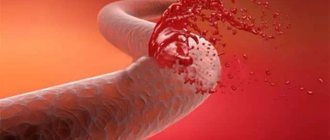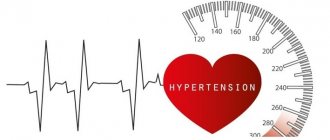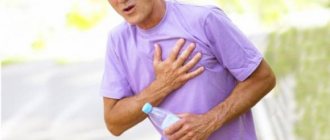Neurology Symptoms Services and prices Specialists Diseases
Fainting (syncope) is a pathological condition with loss of consciousness associated with difficulty in blood supply to brain tissue. Its period is no more than 30 seconds, then the person comes to his senses on his own or with the help of medications. Characteristic
Normally, the central nervous system is well supplied with blood to supply vitamins, trace elements, minerals and oxygen. If their level drops sharply, fainting occurs. Neurologists call it transient cerebral hypoxia. Causes of circulatory obstruction:
- decreased cardiac muscle function with decreased output;
- pathologies of rhythm and heart rate;
- decrease in vascular endothelial tone.
In addition to fainting, vascular insufficiency is caused by other pathologies:
- collapse – a sharp drop in blood pressure with danger to internal organs and the patient’s life;
- cardiogenic shock - insufficiency of left ventricular function with difficulty in blood flow.
Causes
Disorder of the function and regulation of the cardiovascular system:
- arterial hypotension;
- the body’s reaction to different types of physiological changes - urination, coughing, cold air, swallowing reflex, defecation;
- a reflex state when the nervous regulation of blood vessels is disrupted - they expand, the pressure drops;
- increased oxygen supply to the pulmonary system (hyperventilation);
- increased excitability of the vagus nerve, which reflexively leads to a drop in blood pressure.
Mechanical processes leading to obstruction of blood flow in the heart and large vessels:
- arrhythmia;
- difficulty in blood supply to the brain due to ischemia and the formation of blood clots.
Primary diseases:
- hypoglycemia;
- seizures in epilepsy;
- bronchial asthma, pneumonia, carbon monoxide poisoning;
- severe pain syndrome with colic, neuralgia.
Syncope occurs when certain medications are taken without a doctor's approval.
Neurocardiogenic or vasovagal syncope
This type of fainting is characterized by a young age of onset of the disease, multiple repetitions of episodes of loss of consciousness over many years. The patient mentions a tendency to motion sickness and lightheadedness at the sight of blood. Most often, such fainting occurs in warmth, at rest, after physical exertion. It begins in a standing or sitting position, never lying on your back. The prodromal period usually lasts from 30 seconds to several minutes and includes symptoms such as nausea, possibly vomiting, abdominal discomfort, a feeling of heat, cold sweats, a feeling of flushing, dizziness, an increasing feeling of lightheadedness leading to loss of consciousness. Such fainting usually does not lead to bodily harm or injury. Changing to a horizontal position can interrupt the loss of consciousness. Witnesses note marked lethargy and describe how the patient “slipped” to the floor during the attack. There is no disorientation or paralysis upon awakening. There may often be a feeling of extreme fatigue that lasts for several hours.
Symptoms
Clinical symptoms of the period before syncope:
- pale, bluish skin;
- cold sweat;
- tachycardia;
- lack of orientation in space;
- numbness of the limbs, lack of sensitivity.
During the period of fainting, the signs change:
- the skin takes on a gray tint;
- weak pulse, muscle tone;
- pupils dilated;
- there is no consciousness.
If the condition is caused by fainting, it takes 5 to 30 seconds for the person to return to consciousness.
Make an appointment with a neurologist
Giving help
Algorithm for helping an unconscious patient:
If possible, try to support the person to avoid injury due to a fall.- Laying the person on their side will help keep the airway open.
- Elevate your legs if possible.
- Remove the victim from tight clothing.
- Sprinkle your face with water, rub your ears and cheeks.
- Bring ammonia to your nose.
- Determine the patient's pulse and blood pressure.
- If the above steps do not help, call an ambulance.
How can you prevent syncope?
- Lead a healthy lifestyle.
- Get rid of bad habits.
- Avoid stress.
- Do not move to a sitting or standing position too quickly or abruptly.
- Do physical education.
- If presyncope symptoms occur, sit or lie down with your legs elevated. Unbutton your clothes. Wash with water. Eat sweets.
- If high blood pressure is determined to be a common cause of fainting, then you need to take pills prescribed by your doctor to lower it or seek medical help. Self-prescribing medications and adjusting their dosage can be dangerous, as they can sharply lower blood pressure.
If an underlying disease is identified as the cause of syncope, treatment should be taken seriously.
Kinds
There are 2 main forms of syncope. They are associated with neurological disorders or diseases of the cardiovascular system.
Neurogenic syncope
They arise due to a decrease in vascular tone due to the pathology of reflexes under the influence of external stimuli. The following features are characteristic:
- vascular tone reflexively decreases, blood pressure drops;
- a fainting state develops over a short period, muscle weakness, nausea, ringing in the ears, spots and darkness before the eyes appear;
- consciousness is quickly restored;
- after fainting the patient feels well.
Neurogenic syncope falls into several categories.
- Vasodepressor. It is typical for young people under the influence of negative factors - prolonged hunger, acute pain, fear, stress, reduced oxygen concentration in the air. Does not threaten life or health.
- Orthostatic. It is formed due to a rapid change in the position of the body in space (from horizontal to vertical, and vice versa). The condition is formed due to a violation of autonomic neuroregulation. In everyday life, the patient is characterized by weakness, constant fatigue, decreased performance, headache, and dizziness. Orthostatic syncope occurs after a serious illness, surgery, prolonged bed rest, or misuse of antidepressants and antipsychotics.
- Vestibular. Occurs with increased sensitivity of the vestibular apparatus in young children or adolescents. For example, with prolonged swinging on a swing, seasickness, motion sickness in transport.
- Syncope with increased sensitivity of the carotid sinus. This is a neurological disorder of the vagus nerve. The condition is caused by bradycardia, arterial hypotension, and difficulty in cerebral circulation. Pathology occurs in elderly patients. Fainting is provoked by rapid movement, turning the head, squeezing the neck with a pillow, or excessively tightening the tie.
- Situational. Pathology is formed by physiological changes that lead to increased stress on the body. For example, prolonged cough, sports.
Pathology is differentiated by a cardiologist and a neurologist.
Fainting associated with diseases of the cardiovascular system
This form of syncope is not characterized by a pre-syncope state. There are 2 groups of fainting.
- Against the background of arrhythmia, changes in cardiac conductivity. Often observed in patients with paroxysmal tachycardia.
- Caused by difficulty in cardiac output. Formed during heart attack, ischemia or vascular aneurysm, cardiomyopathy.
Diagnosis is carried out by a cardiologist.
Syncope cannot be left unchecked. This is a signal to detect acute or chronic disease. Less commonly, the pathology is provoked by serious infectious diseases (influenza, parainfluenza, typhus, hepatitis, dysentery).
A patient with syncope should be asked the following questions:
- At what age did you first faint, and how often do you faint?
- How long did it take from the moment you realized that “something was wrong” with you until you lost consciousness? This is a key question that will allow us to assess the course of the prodromal period.
- What were you doing when the symptoms appeared? What position were you in: lying, sitting, standing, in motion?
- What sensations did you experience before losing consciousness - nausea, fullness in the stomach, increased salivation, sweating, flushing, feeling hot or cold, sudden yawning, tingling or numbness in the arms and legs, flashing “floaters” before the eyes or distorted perception, spots before the eyes ?
- Did you feel any smells, sounds, or visual distortions before you lost consciousness? Were you injured during the fall?
- Did you feel dizzy, nauseous during injections or taking blood for analysis?
- Do you get motion sickness in transport?
- Did you understand what happened to you when you woke up?
- During fainting, did you bite your tongue or cheek, did you feel weakness in half of your body after waking up, did you experience urinary or fecal incontinence during the attack?
It is also important to ask questions to the witness of the syncope, especially when seeing an elderly patient with retrograde amnesia, such as:
- What did the patient complain about before he lost consciousness?
- How long was the patient unconscious?
- Did you have any convulsions while you were unconscious?
- did the patient make involuntary sounds during loss of consciousness?
- did the patient wet himself or lose stool?
- Was the patient tense or, conversely, lethargic at the time of loss of consciousness?
- did the patient look deathly pale, with a gray or sallow complexion?
- Did you quickly realize what happened after waking up, or was you disoriented and paralyzed?
These features of the anamnesis, obtained from the patient and from the witness, make it possible to most accurately identify the cause of fainting.
Treatment and prevention
Following some preventive measures can help avoid syncope.
To do this you need:
- Do not stay in the heat for a long time;
- Drink enough drinking water, especially in summer;
- Avoid stress;
- Reduce alcohol consumption to a minimum;
- Avoid staying in one position, doing warm-up or walking, or massaging muscles;
- Hypertensive and hypotensive patients take medications on time. It is also important that all medications were prescribed only by the attending physician.
If you are already feeling faint, you should immediately take a lying or sitting position. This method will help reduce the risk of fainting.
Low blood pressure
Due to too low blood pressure, oxygen starvation also occurs. The brain is affected and short-term syncope may occur.
Hypotonic patients can easily notice a faint state. At this time, severe weakness and dizziness often occur, and in rare cases, even a gag reflex occurs.
In the event of a severe attack, the victim may experience convulsions.
In people who do not suffer from hypotension, blood pressure can fall for various reasons. Among them the most common:
- Blood loss;
- Injuries and serious bodily harm;
- Heatstroke;
- Shock.
To prevent fainting, such people need to train their blood vessels in various ways. For example, you can harden the body. In this case, it is better to start with wiping, then move on to a contrast shower. Massages and saunas are also good for training veins and blood vessels.
Read also
Amyotrophic lateral sclerosis (ALS)
– “One of the most terrible human diseases... 3 letters...” – “Cancer” – “Not suitable...” Yes, dear ones, there is something worse than cancer.
And this disease is called amyotrophic lateral sclerosis or... Read more
Hepatic encephalopathy
Hepatic encephalopathy is a brain lesion that occurs against the background of liver pathology and is caused by liver failure. There is acute hepatic encephalopathy, which occurs on…
More details
Epicondylitis
Do you know this disgusting feeling when you are passionately doing something, and suddenly, quite by accident, your elbow bumps into something hard and in that very place, after the impact of which the whole arm weakens...
More details
Restless legs syndrome
Restless legs syndrome - manifests itself as unpleasant sensations in the lower extremities, mainly in the evening and at night, forcing you to make relief movements with your legs, which leads to…
More details
Sports injuries
Contrary to the popular belief that all athletes are completely healthy people, this particular group of patients is subject to colossal physical stress on various organs and systems, which...
More details
